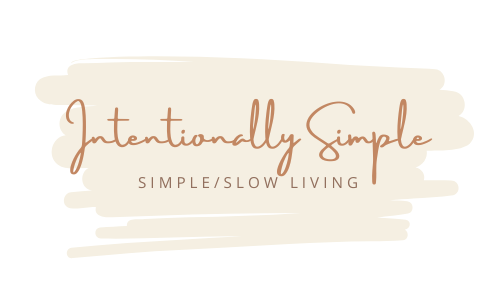The Illusion of Choice: How Algorithms Shape What We Eat, Watch, and Even Think
Have you ever opened Netflix for a “quick watch” and ended up binging a show you hadn’t even planned to watch? Or scrolled through Instagram, only to realize an hour later that you’ve been fed an endless stream of “recommended” content? If so, you’re not alone. This is the subtle power of algorithms—they quietly influence what we consume, how we think, and even how we live our lives.
In the pursuit of slow living in the age of algorithms, many of us believe we’re making intentional choices. But are we really? Or are we merely following a digital script that’s been written for us? Today, we’ll explore how much control we truly have—and how to reclaim slow living from algorithms to lead a more mindful, intentional life.
Can You Truly Live Intentionally When Tech Companies Predict Your Every Move?
Modern technology thrives on the attention economy—a system where companies profit by keeping us engaged for as long as possible. Every click, like, and share feeds into data-driven models that predict (and manipulate) our next move. We think we’re choosing, but in reality, the algorithm often chooses for us.
Research has shown that social media algorithms shape consumer behavior by curating content that maximizes engagement, often at the cost of user autonomy.
Consider this:
- Shopping: Amazon’s recommendation engine doesn’t just suggest products—it nudges you toward items you’re more likely to impulse-buy. (Admit it, you’ve bought at least one weird late-night purchase thanks to that “Customers also bought” section.)
- Dating: Dating Apps use AI to show you people similar to those you’ve previously swiped right on, limiting exposure to diverse matches. (So much for meeting “someone different” this time!)
- News Consumption: Social media platforms curate feeds to reinforce your existing beliefs, reducing exposure to different perspectives (algorithmic bias in action).
A study on AI and consumer manipulation highlights how personalized recommendations can exploit behavioral biases, making us more likely to conform to algorithmic suggestions.
So, if our choices are being subtly influenced at every turn, is true intentional living even possible in a digital age? And can we really reclaim slow living in the age of algorithms?
Slow Living vs Algorithm-Driven Choices: How Much Control Do We Really Have?
Slow living vs algorithm-driven choices is the battle of modern intentionality. Slow living encourages mindfulness, presence, and conscious decision-making, while algorithms thrive on automation and prediction. The problem? The two are often at odds.
Algorithms eliminate friction in decision-making, which sounds convenient—but it also removes the opportunity to pause, reflect, and act intentionally. Instead of consciously choosing what to watch, read, or eat, we default to what’s presented to us. Over time, this passive consumption can erode our ability to think independently and live intentionally.
The Algorithm Detox Experiment
Want to test how deeply algorithms influence your daily life? Try this:
✔️ For one day, only access digital content manually. Don’t rely on recommendations—search for specific articles, videos, or music intentionally.
✔️ At the end of the day, reflect: Did your choices change when you weren’t guided by an algorithm?
Be warned: Searching for content manually might feel like time-traveling to the early 2000s. Next thing you know, you’ll be using a physical map and wondering why your playlist isn’t magically predicting your mood.
How to Reclaim Slow Living from Algorithms
Living intentionally in a digital age requires conscious effort. Here’s how to reclaim slow living in the age of algorithms and take back control of your choices:
1. Reduce Algorithmic Influence in Your Daily Life
✔️ Turn off autoplay on YouTube and Netflix to prevent binge-watching. (We see you, Netflix, judging us with that “Are you still watching?” prompt. Yes, Netflix, we are.)
✔️ Disable personalized ads and content recommendations where possible.
✔️ Follow a digital minimalism approach by curating your feeds and limiting unnecessary apps.
Digital minimalism encourages selective engagement with technology, promoting mindful consumption instead of passive scrolling.
2. Choose Analog Over Digital When Possible
✔️ Read a physical book instead of algorithm-driven online content.
✔️ Use a journal for planning instead of an app that suggests your next move.
✔️ Opt for in-person experiences over endless digital scrolling.
Embracing minimalism and intentionality has been shown to increase overall well-being.
3. Be Intentional About Your Media Consumption
✔️ Search for news and entertainment manually instead of relying on curated feeds.
✔️ Diversify your content sources to break free from algorithmic bias.
✔️ Use various tools to collect and read articles on your own terms.
4. Use Non-Algorithmic Digital Tools
If you’re serious about choosing an intentional life in a digital age, consider using platforms that prioritize user control:
- Search Engine: Use Google alternatives for unbiased search results.
- Social Media Alternative: Try alternative apps, which offer a chronological feed.
- Video Alternative: Explore Nebula for curated, ad-free content.
Reflect: Are You Truly Choosing Your Life?
Slow living is about making intentional choices, but how to reclaim slow living in the age of algorithms starts with awareness. Ask yourself:
✅ When was the last time I chose a movie, book, or product without digital suggestions?
✅ Am I consuming content that genuinely aligns with my values, or just what’s been fed to me?
✅ What small step can I take today to break free from algorithm-driven decisions?
A study from Cambridge researchers warns that AI-driven systems could manipulate human preferences beyond our conscious awareness, raising ethical concerns about autonomy.
3-Day Digital Detox Challenge
Want to test your ability to live intentionally in the digital age? Try this 3-day digital detox challenge to embrace slow living in the age of algorithms:
Day 1: Algorithm Awareness
-
Track every time an algorithm suggests something to you.
-
Write down how many times you accept its recommendation.
Day 2: Intentional Choice Only
-
Avoid algorithm-driven content.
-
Choose everything manually, from news articles to entertainment.
Day 3: Analog Exploration
-
Spend the day offline as much as possible.
-
Engage in slow living activities like reading, journaling, or nature walks.
After the challenge, reflect on your experience. Did you feel more in control of your choices?
Take Back Control & Live with Intention
In an era where algorithms are designed to capture our attention and influence our choices, embracing slow living in the age of algorithms is a revolutionary act. We can either let technology dictate our lives, or we can reclaim our power by living with intention.
Start today—choose your next book, your next meal, or even your next moment without letting an algorithm decide for you. Real slow living isn’t about escaping technology; it’s about using it consciously to build a life that aligns with your deepest values.
So, the next time an algorithm tries to spoon-feed you your next favorite show, book, or existential crisis—pause. Take a deep breath. And remember, you’re smarter than a bunch of 1s and 0s (most of the time).
What’s one way you’ve noticed algorithms influencing your choices? Drop a comment below and let’s discuss!


